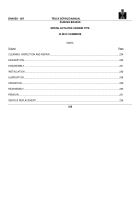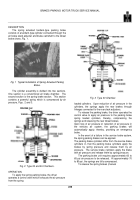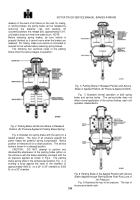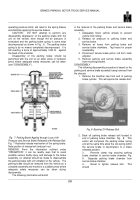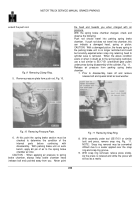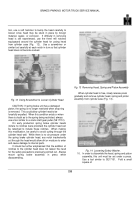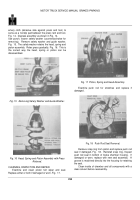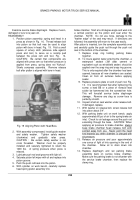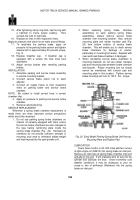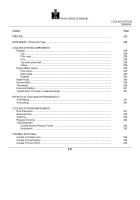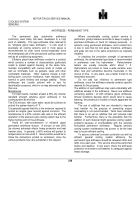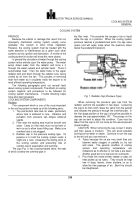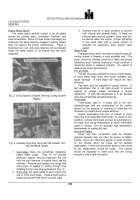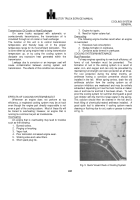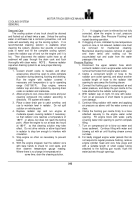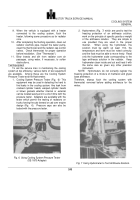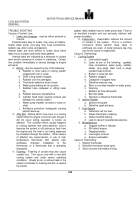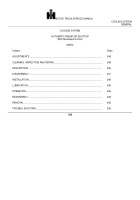TM-5-3805-254-14-P-2 - Page 240 of 894
MOTOR TRUCK SERVICE MANUAL
BRAKES-PARKING
15. After tightening clamp ring bolts, tap the ring with
a hammer to insure proper seating.
Then
recheck the nuts for tightness.
16. Replace air lines in their respective inlets.
Apply air pressure and check for air leaks around fittings.
17. To reactivate the parking brake, apply air
pressure to the parking brake section and tighten
release bolt to approximately 50 pounds torque,
Fig.
8.
18. Replace breather cap.
If breather cap is
equipped with a screen the hole must face
downward.
19. Adjust service brakes after resetting parking
brakes.
INSTALLATION
1. Assemble parking and service brake assembly
to vehicle mounting bracket.
2. Connect service brake piston rod to slack
adjuster.
3. Connect air supply hoses to their respective
inlets on parking brake and service brake
chamber.
NOTE:
Be certain to install correct hose in correct
chamber inlet.
4. Apply air pressure to parking and service brake
chamber.
5. Remove vehicle blocking.
SERVICE REPLACEMENT
Whenever a spring brake chamber replacement is
made there are three important service precautions
which should be observed:
1. Do not use parking spring brake chambers on
chassis not already equipped with them unless
the service brake chambers are also changed to
the type having reinforcing plate inside the
service brake chamber (Fig.
20).
Standard air
chambers do not provide sufficient strength in
mounting stud area to withstand added weight
and load imposed by the spring brake unit.
2. When
replacing
spring
brake
chamber
assemblies on early parking spring brake
assemblies, always remove service brake
chamber from mounting bracket.
Also, remove
mounting plate and rubber insulator pad (Fig.
20) from bottom exterior of service brake
chamber.
This will enable you to check service
brake chambers for damage or cracks-
particularly in mounting bolt areas.
Replace with
new reinforced brake chambers if damaged.
3. When reinstalling service brake chambers to
mounting brackets, do not use rubber insulator
pad and mounting plate between brake chamber
and bracket.
Proper mounting bolt nut torque
cannot be maintained with exterior pad and
mounting plate in this location.
Tighten service
brake mounting bolt nuts to 150 ft.
lbs.
torque.
Fig. 20
Early Model Parking Spring Brake Unit Having
Mounting Plate and Rubber Pad
LUBRICATION
Every three months or 20, 000 miles add two ounces
of light engine oil (SAE10) into spring brake air inlet port.
Remove air inlet hose at spring brake chamber inlet port
and add oil into port.
It will gradually work its way into the
cylinder and lubricate the seal.
Under extremely cold
weather conditions, it may be necessary to pour an
ounce or two of antifreeze (Methanol) into the spring
brake air inlet port.
236
Back to Top



